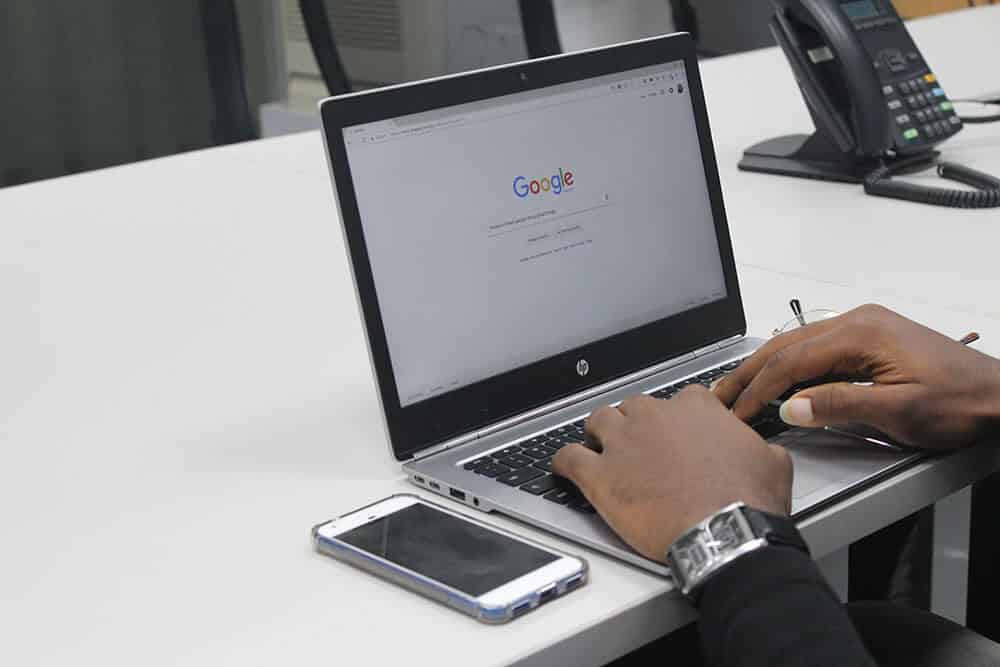In my last post, I wrote all about professional communication. One topic I didn’t cover, however, was the dreaded cover letter. This was on purpose. The cover letter is such a common and essential part of the job application process that it deserves its own post.
And so I bring you today’s article: how to write a cover letter.
I’ll go over everything you need to know to write a killer cover letter or personal statement for any part-time job, internship, or future career path. Let’s get started!
What Is a Cover Letter?
Dear Sir or Madam, will you read my book?
It took me years to write, will you take a look?– The Beatles, “Paperback Writer”
In a world of emails and text messages and Snapchats, we don’t write many letters. Indeed, the only people I write letters to these days are my grandma and Members of Congress, as well as the occasional handwritten holiday card. So it’s no wonder that writing a cover letter feels hard–it’s not something we get to practice much.
So what is a cover letter, anyway? What’s the point? Doesn’t your resume just speak for itself? Well, yes and no. Your resume is important, and we’ll have a full post on writing one soon. In the meantime, check out our post on 5 Resume Mistakes to Avoid and Thomas’s interview with a hiring director who read over 10,000 resumes.
But while a well-crafted resume tells a prospective employer a lot about you, it can’t convey the following things:
- Your writing skills (or lack thereof)
- How you talk about yourself (which is a good predictor of how you’ll come across in an interview)
- Who you are (the personality details beyond “the facts and figures” of your resume)
A cover letter lets you display all of the above and more. And that’s the way you should think of it: a cover letter isn’t a boring chore to “get through”. It’s an opportunity to show your prospective employer that you’re more than just a number. Because you’re not going to stand out just by having good grades or a cool internship (though those don’t hurt).
People hire others based on their qualifications, naturally, but they also want to hire people who will fit with their company culture and who are, well, interesting. If you do it right, you can convey all of this in your cover letter and have your prospective employer excited to interview you.

One final note: lots of jobs these ask for cover letters without calling them that. I’ve talked to several friends who had jobs or internships that asked for “personal statements.”
For the purposes of a job application, a personal statement is the same as a cover letter. In fact, thinking of a cover letter as a personal statement will help you avoid several of the common cover letter mistakes that we’ll cover in the following section.
Even if the job application just asks for you to send an email with your resume attached, what you write in the body of that email is still a kind of “cover letter”.
As the saying goes, any interaction you have with a prospective employer is an interview. This applies just as much to any written communication–even if it’s just an email.
So how do you write a cover letter, anyway? Read on to find out.
How to Write a Cover Letter

I can’t cover every possible cover letter scenario, but I can give you some advice that applies no matter what job you’re applying for.
Here are some general principles for writing a winning cover letter:
1. Don’t summarize your resume.
As I already said (and will reiterate throughout this article), the point of a cover letter is to show your prospective employer things they can’t learn from reading your resume. It’s tempting to make your cover letter a “letter” version of your resume, but don’t do it. You’re showing that you’re lazy and uncreative, as well as missing out on a chance to show off your writing skills and personality.
In the same vein, never use the phrase “as you’ll see in my resume” or “as my resume shows”. This is obnoxious (the person has obviously read your resume) and redundant.
2. Keep it short.
Please, please, please keep your cover letter short. The point of a job application is to get you an interview. Therefore, the fewer obstacles you put in the way of getting an interview, the better.
Remember, the hiring manager isn’t reading just your application. They’re reading hundreds or in some cases thousands of others. When you’re dealing with that scale of material, you do everything you can to optimize your workflow.
One of the quickest optimizations? Ignoring (or only reading part of) long resumes and cover letters. Imagine how you’d feel if you’d already read 500 applications and came to one that included a three-page cover letter. My response would be to either a) scream or b) maybe read the first page and then toss it into the “no” pile.
Your cover letter should be three paragraphs and a maximum of one page. Don’t make it longer or harder than it has to be. No matter how fascinating your life may have been, if you’ve just graduated college you do not have enough material to justify a multi-page cover letter or resume.
Besides, being concise demonstrates your ability to condense lots of information into an easily digestible format, which is a valuable skill in any employee.
3. Include the hiring manager’s name if possible.
You won’t always know who will be reading your application. But if you can find the name of the hiring manager or other person that will be reviewing it, include it in the letter’s salutation (the “Dear PERSON’S NAME” part at the beginning).
It’s a nice touch that shows you can do research and are personable. As Dale Carnegie put it, “Remember that a person’s name is to that person the sweetest and most important sound in any language”.
4. Include your signature at the end.

In the unlikely event that you’re mailing your cover letter, you can sign it with a pen. More likely, however, you’ll be submitting it electronically. In that case, include a digital copy of your signature.
It’s a small touch, but it shows professionalism and attention to detail. Check out this guide from How to Geek on how to add a digital signature on both Mac and PC.
5. Use the appropriate tone.
Take a look at how the company presents themselves in the job posting and on their website/social media. What themes stand out? Do they give off a hip, youthful vibe? Or more of a traditional, dependable one?
I’m not saying that you should be fake, but you should try to mirror the company’s general “attitude” in your cover letter. This shows the hiring manager (even if it’s on a subconscious level) that you “get” what the company is about.
For example, take a look at the About Us page for work chat app Slack:

This page shows that Slack helps companies get things done but is still whimsical and creative (just look at the illustration under the text). They emphasize their broad user base and fast growth, as well as their commitment to simplicity and productivity.
So if you were applying to a job at Slack, it would be wise to show how you could help maintain this commitment to simplicity while also embracing the rapid pace that comes from a fast-growing company.
In contrast, have a look at the About Us page for management consulting firm McKinsey & Company:

Notice the immediate contrast in design. McKinsey wants to project authority and experience. They show this through the statistics at the bottom of the page, which emphasize their global reach and influence. Note, however, that they also mention how they have continued to evolve (“73% of our work today represents new capabilities, compared to 15 years ago”).
If you were applying to a job at McKinsey, you’d write a very different cover letter than for a job at Slack. You’d tailor your letter to the specific duties of the position, but you’d also want to generally show that you appreciate McKinsey’s long history while still embracing innovation.
6. Proofread and edit.
First, run the letter through Grammarly to catch spelling and grammar errors. Then, put it through Hemingway to help you tighten up the language. After that, read it out loud and fix any sentences or words that sound awkward, pretentious, or confusing.
Finally, give the letter to some trusted friends and mentors for editing. If you have someone in your network who already works in the same field or a similar job, then that’s ideal.
But if not, just get someone who has experience with business writing or whose editing skills you trust. Your college’s career center and writing center are also helpful resources in this process.
What to Discuss in Your Cover Letter

So now that you have some general principles, what should you actually write in your cover letter? Sometimes, the job posting will include a specific prompt for you to answer. If that’s the case, then by all means use that as a starting point.
But most job postings are not as clear, simply asking you to “attach a cover letter”.
I think that any good cover letter should include the following elements:
1. Why this job and company interest you.
Even if this isn’t your dream job, presumably something about this company made you choose them out of all the others out there. Include this information in the letter.
As I said earlier, companies want to hire people that will fit with their culture. One good way to test this is to see if the applicant understands what the company is about. If you don’t even mention the company in your letter, it could look like you didn’t read the job application or research the company.
2. How your previous experience has prepared you for the job.
This one can be tricky. There’s no way that you’ve had the exact same experience this job will give you. Instead, think about how you’ve faced similar challenges in your other job (or volunteer work or whatever relevant experience you have). Tell the story of those, and then tie them into the position you’re applying for.
3. A catchy opening sentence.
Remember how I said that hiring managers have to read mountains of job applications? This gets really boring, as you can imagine. So if you can write a cover letter that has a catchy opening line to “hook” the person reading it, then you’re already on your way to making their day better.
To get inspiration, don’t read other cover letters; read great stories or journalistic articles. This list of 100 Best First Lines from Novels is a good place to start.
You don’t have to have a crazy story to come up with an intriguing first line. It’s all about how you present the stories you do have. It’s the difference between I’ve always wanted to work as an accountant (boring and doubtful) and I’ll never forget the day I discovered my passion for numbers (this leaves the reader wanting to learn more. When was this day? What happened?).
4. A polite, positive conclusion.
Now that you’ve written a superb cover letter, don’t screw it up with an off-putting conclusion.
The main things to avoid in your conclusion are presumptuous statements such as “Looking forward to your response” or “Thanking you in advance”. Both sound tacky and fake.
Just briefly summarize what you’ve talked about in the rest of the letter and close with “Thank you” followed by your name and signature. That’s all it needs to be.
Putting It Into Practice
Taken all together, here’s the basic outline of a successful cover letter:
Dear HIRING MANAGER OR COMPANY’S NAME,
Paragraph 1: Catchy opening sentence followed by an explanation of why the job/company interest you.
Paragraph 2: Explain why you’re qualified for the job. Tell a story that illustrates how you’ve overcome similar challenges in your previous jobs/volunteer work/internships/life experience.
Paragraph 3: Wrap things up. Summarize what you talked about (but don’t repeat it word for word). Keep it positive and short.
Thank you,
YOUR NAME
YOUR SIGNATURE
Conclusion

Cover letters don’t have to be scary. As long as you follow the principles outlined in this article, you’ll be sitting down for the interview in no time.
Remember: a human being is on the other end of that job application–write a cover letter that shows that you are also human, and you’ll be on your way.
What questions do you have about cover letters? Share them in the comments below or start a discussion in the College Info Geek Community.
Image Credits: featured, interview, typing hands, signature, hand writing, typewriter keys


